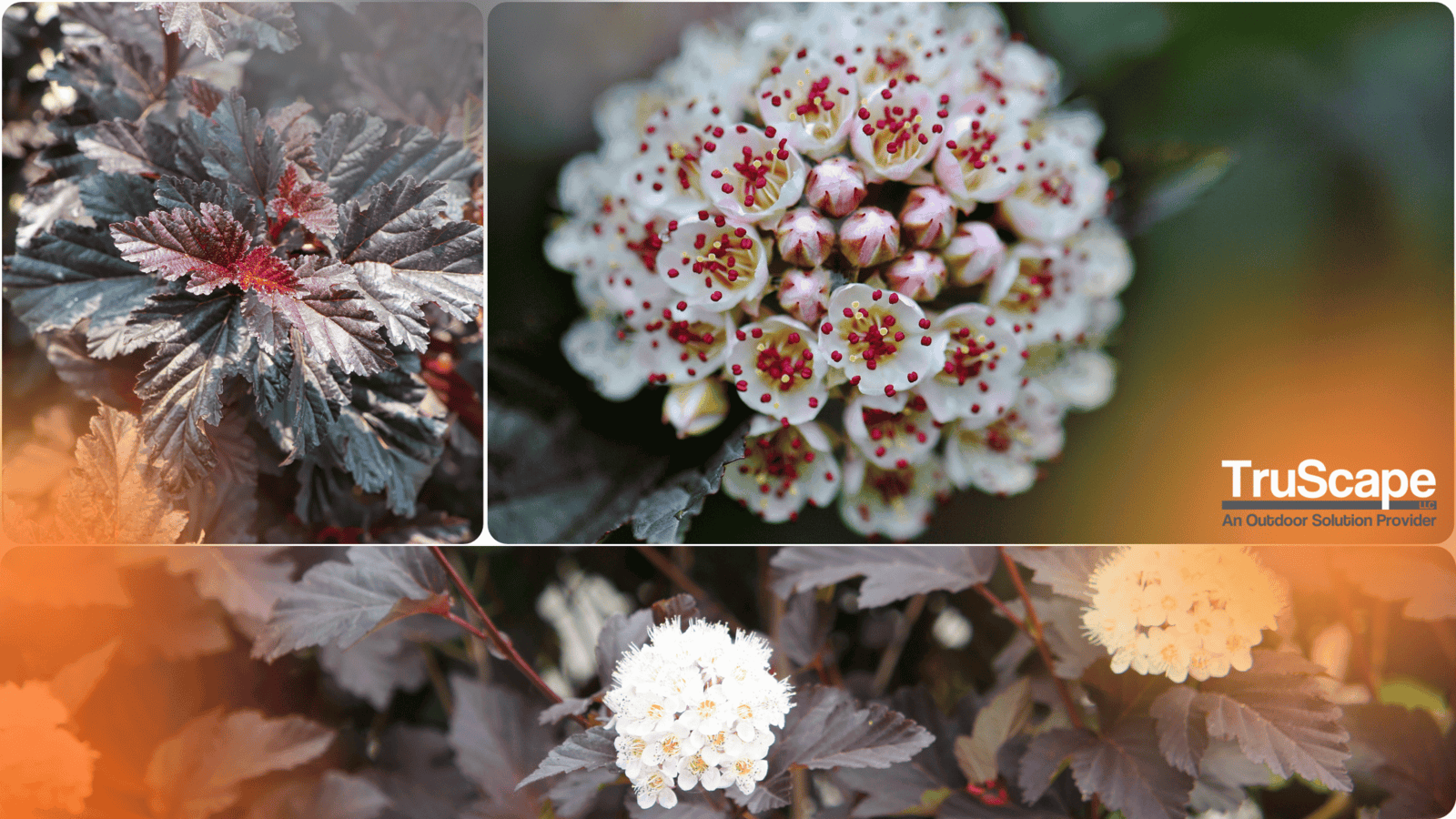
Add Elegance and Vibrancy to Your Landscape with Summer Wine Ninebark
Summer Wine Ninebark is a stunning addition to any landscape, offering vibrant color and unique texture throughout the seasons. Known for its rich, wine-colored foliage and easy maintenance, this plant is perfect for those looking to add a touch of elegance and interest to their garden or commercial property. Here’s why the Summer Wine Ninebark should be on your planting list.
1. Striking Foliage
1. Striking Foliage
The most notable feature of the Summer Wine Ninebark is its deep burgundy leaves that retain their color from spring through fall. This rich hue provides a striking contrast to green foliage plants and adds depth to your garden design. In the fall, the leaves turn a vibrant red, adding to the plant's year-round appeal.
2. Beautiful Blooms
2. Beautiful Blooms
In late spring to early summer, the Summer Wine Ninebark produces clusters of pinkish-white flowers that add a delicate beauty to its bold foliage. These blooms attract pollinators such as bees and butterflies, enhancing the ecological value of your garden. The flowers are followed by red seed capsules that add another layer of interest.
3. Compact and Manageable Size
3. Compact and Manageable Size
Reaching a height and spread of about 4 to 6 feet, the Summer Wine Ninebark is compact enough for smaller gardens and versatile enough to be used in a variety of landscape designs. It works well as a specimen plant, in mixed borders, or even as a hedge. Its manageable size makes it a great choice for both residential and commercial landscapes.
4. Low Maintenance
4. Low Maintenance
One of the key benefits of the Summer Wine Ninebark is its low maintenance requirements. It is highly adaptable to different soil types, drought-tolerant once established, and resistant to common pests and diseases. Pruning is minimal, mainly to maintain shape and remove any dead or damaged branches. This makes it an ideal plant for busy homeowners or property managers looking for beauty without the hassle.

5. Seasonal Interest
5. Seasonal Interest
From spring through fall, the Summer Wine Ninebark offers visual interest with its colorful foliage, attractive flowers, and textured bark. In winter, its exfoliating bark adds texture and contrast to the garden, providing a focal point even when other plants are dormant. This seasonal versatility ensures your landscape looks appealing all year round.
Tips for Planting and Care
Tips for Planting and Care
To ensure your Summer Wine Ninebark thrives, follow these simple tips:
- Planting Location: Choose a location with full sun to partial shade. Full sun will enhance the foliage color, while partial shade can help prevent leaf scorch in hotter climates.
- Soil Requirements: While adaptable to various soil types, well-draining soil is ideal. Amend the soil with compost if necessary to improve drainage and nutrient content.
- Watering: Water regularly during the first growing season to establish a deep, extensive root system. Once established, the plant is quite drought-tolerant.
- Fertilizing: Apply a balanced, slow-release fertilizer in the spring to promote healthy growth. Follow the manufacturer’s instructions for application rates.
- Pruning: Minimal pruning is needed. Prune after flowering to maintain shape and remove any dead or damaged branches.


